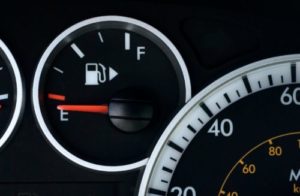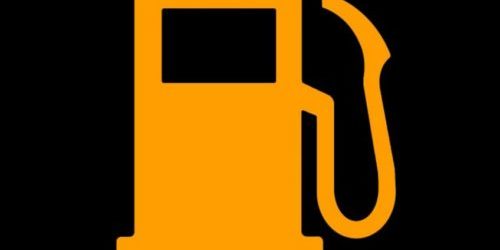If you are reading this article, and you are on the road looking at your refueling lamp lights up, and you feel like you are running out of gas.
Do not PANIC please relax and read this article.
The most common reason for dispatching road services is over-discharge of the battery, that is, flat battery. However, it is always ranked within the 10th place is car ran out of fuel. Even though the car has a proper fuel gauge, we will run out of fuel for some reason, and I will introduce know-how to avoid this.
・ What is the mechanism to know the remaining fuel amount?
What kind of fuel gauge of your car? old-fashioned fuel gauges are the type in which the needle moves up and down, most of today’s fuel gauges are digital and are often indicated by liquid crystal “bars”. Whether it is a needle type or a bar type on the digital screen, a car that has only this type of fuel meter measures the amount of fuel by changing the height of the float inside the fuel tank depending on the amount of fuel.

Due to this method of measuring the liquid, it is not perfect all the time. The display amount may change when the car leans forward, backward, left or right. In addition to the fuel gauge, there is also a fuel level warning light. The fuel level warning light turns on when the amount of fuel drops below a certain level.
Urgent warning lights are lit in red, while fuel level warning lights are lit in orange. People who have a habit of diligently adding fuel may not have seen it.
Some people may feel panicked when the fuel warning light comes on, but don’t worry so much. It’s urgent if this is “red”, but you don’t have to worry so much about “orange”. When the fuel level warning light comes on, how much fuel is left in the tank really depends on the car model. It is said that cars with good fuel economy have less fuel left, and cars with poor fuel economy have more fuel left.
It is said that at least 50km (31miles) can be traveled after the fuel level warning light is turned on. This is said to be based on the fact that gas stations (Petrol station) on the road are set approximately every 50 km, but in some road, between the gas station and the gas station may be 100 km(62 miles) apart. A little caution is required.The number of liters or gallons remaining in your car and the remaining fuel level warning light that lights up is described in the instruction manual.
・ A change in the warning light is a guide for the remaining amount.
This fuel level warning light often turns on and off at first. This is because the float in the tank moves during acceleration / deceleration and cornering. Some models keep the warning light once it is turned on, and those models do not repeatedly turn on and off.
It is just a guide, but while the fuel level warning light is on or off, there is still a high sense of security, but if it remains lit it means that the fuel is running low. For your car, it’s a good idea to know how many liters are left when it is blinking and how many liters are left when it is fully lit. When that happens, fill the tank and the answer will come out.
On the other hand, there is also one that displays the cruising range according to the remaining amount of fuel. This isn’t exactly the amount of fuel left, but you can pretty much figure out how many more miles or kilometers you can drive. It is predicted from the remaining fuel amount, referring to the driving conditions up to that point.
The accuracy is quite high because it accumulates not only the fuel tank float information but also how much fuel has been filled. However, even with this method, there is a margin, and even if the mileage/kilo becomes zero, you can still drive for a while.
・ “What to do” and “Do not do”?
Now, if you have to run in a slump of fuel, how can you save fuel? First of all, write down what you should not do before that. Do not stop the engine on a downhill. Stopping the engine will reduce fuel consumption, but it can also cause the brake booster to stop working, or even the steering to lock. Also,
- It is dangerous to set the AT position to neutral while driving, so let’s not to do this.
- If you are using an air conditioner, turn it off to reduce fuel consumption.
This is because the air conditioner uses the power of the engine. The electrical system does not have a big impact, so you can use audio and navigation as they are. You can use the fan for the air conditioner.
Low speed is recommended. Since air resistance is proportional to the square of speed, the higher the speed, the more the running resistance increases. However, for general roads, the upper limit is the legal speed of 50-60km(30-35 miles) / h, and for highways, the lower limit is 70-80km (45-52miles)/ h. this is totally depending on where you drive or countries, Lower speeds may have better fuel economy, but it is also important not to bother others.
When searching for a gas station, it is better to stop the car and stop the engine once. It’s the old carburetor cars that eat gasoline at the time of starting, and today’s cars do not have to worry about it. so if you are driving old car or class car it maybe not a bad idea to keep running the engine but if you are driving lets say after 1990- then, you can stop the engine first and search the gas(petrol) station.
By the way, what will happen to the cost of calling for road assistant service?
JAPAN
I searched of some countries such as if you are in Japan, you need to contact to JAF. and members are basically free and only the actual fuel cost is required. On the other hand, in the case of non-members, troubles on the general road from 8:00 to 20:00 cost 8380 yen + actual fuel cost. Due to trouble outside the SA & PA on the expressway between 20:00 and 8:00, the charge is 19,900 yen + fuel cost + highway charge. Even if you are not a JAF member, even if you are a non-JAF member
Australia
it is depending on each states and which insurance service you are calling. however, most of insurance company will come to you about with up to 5 liters of free fuel to get you to the nearest service station if you run out. and also each states road service such as RACQ, RACV, you can call them and be able to get the membership on site.
USA
Call for emergency roadside assistance in your area. Your car insurance’s road assistance program (if it’s in your policy) or an organization like AAA (if you’re a member) can deliver gas to you. Stay in your car while you wait, and keep your seat belt fastened, especially if you’re on a highway. alternatively, you can download HONK app, you can download it in seconds. Then simply open the app, select the “out of gas” tab, type in your location information, and confirm your order. On average, help arrives within 15 to 30 minutes. this is depending on each states.
if you do not have a phone or if you are out of reception, you need to search the phone on road and make a phone call for emergency assistance though this is very dangerous so whenever you have to walk on the road, your safety is the first priority. please try to wear something shiny so people can see you. and If you are waiting the road assistance, please do no leave from the car especially if its on the free way. and leave hazard lights on.
Hope this article helps someone who needs help!







